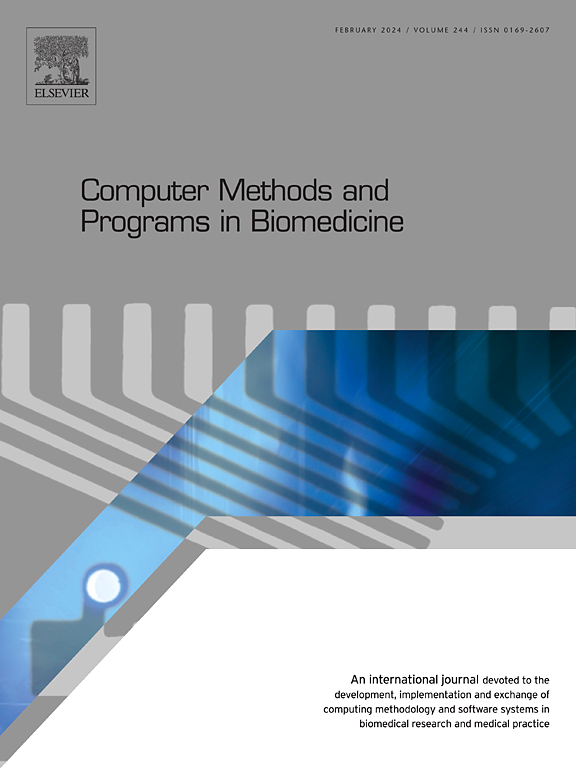MT-RCAF: A Multi-Task Residual Cross Attention Framework for EEG-based emotion recognition and mood disorder detection
IF 4.9
2区 医学
Q1 COMPUTER SCIENCE, INTERDISCIPLINARY APPLICATIONS
引用次数: 0
Abstract
Background and Objective:
Prolonged abnormal emotions can gradually evolve into mood disorders such as anxiety and depression, making it critical to study the relationship between emotions and mood disorders to explore the causes of mood disorders. Existing research on EEG-based emotion recognition and mood disorder detection typically treats these two tasks separately, missing potential synergies between them. The purpose is to reveal the relationship between emotions and mood disorders and propose a Multi-Task Residual Cross Attention Framework (MT-RCAF) to enhance both classification performances.
Methods:
In MT-RCAF, the Feature Extraction module extracts specific and shared features for the corresponding tasks. The Residual Multi-head Cross Attention (RMCA) module dynamically adjusts attention weights to explicitly capture both shared and task-specific information, enhancing complementarity and feature sharing. The Gated Multi-embedding (GME) module filters out irrelevant features, improving task-specific performance. Finally, the Task Tower Classification module balances losses across tasks to facilitate both emotion recognition and mood disorder detection.
Results:
We conducted experiments on the DEAP dataset Black as well as the self-collected Emotion and Mood Disorder Dataset (EMDD) to validate the effectiveness of MT-RCAF. The results show that the framework gains improvement in strongly correlated task groups, with average accuracy increases of 3.22% for emotion recognition and 3.91% for mood disorder detection, and in generally correlated task groups, with average accuracy increases of 2.87% for valence and 3.34% for arousal. The study also reveals that mood disorders (depression or anxiety) increase sensitivity to negative emotions, and intense emotions enhance mood disorder detection.
Conclusion:
The study validates the relationship between emotions and mood disorders from a deep-learning perspective and finds that interconnected tasks result in more accurate and robust results.
MT-RCAF:基于脑电图的情绪识别和情绪障碍检测的多任务剩余交叉注意框架
背景与目的:长期的异常情绪可逐渐演变为焦虑、抑郁等情绪障碍,因此研究情绪与情绪障碍的关系,探讨情绪障碍的病因至关重要。现有的基于脑电图的情绪识别和情绪障碍检测研究通常将这两项任务分开处理,忽略了它们之间潜在的协同作用。目的是揭示情绪与情绪障碍之间的关系,并提出一个多任务剩余交叉注意框架(MT-RCAF)来提高两者的分类性能。方法:在MT-RCAF中,Feature Extraction模块为相应的任务提取特定的和共享的特征。剩余多头交叉注意(RMCA)模块动态调整注意权重,明确捕获共享信息和特定于任务的信息,增强互补性和特征共享。门控多嵌入(GME)模块过滤掉不相关的特征,提高特定任务的性能。最后,任务塔分类模块平衡了任务之间的损失,以促进情绪识别和情绪障碍检测。结果:我们在DEAP数据集Black和自我收集的情绪和情绪障碍数据集(EMDD)上进行了实验,验证了MT-RCAF的有效性。结果表明,该框架在强相关任务组中得到了改进,情绪识别和情绪障碍检测的平均准确率分别提高了3.22%和3.91%;在一般相关任务组中,效价和唤醒的平均准确率分别提高了2.87%和3.34%。研究还表明,情绪障碍(抑郁或焦虑)会增加对负面情绪的敏感性,而强烈的情绪会增强对情绪障碍的检测。结论:本研究从深度学习的角度验证了情绪与情绪障碍之间的关系,并发现相互关联的任务导致更准确和稳健的结果。
本文章由计算机程序翻译,如有差异,请以英文原文为准。
求助全文
约1分钟内获得全文
求助全文
来源期刊

Computer methods and programs in biomedicine
工程技术-工程:生物医学
CiteScore
12.30
自引率
6.60%
发文量
601
审稿时长
135 days
期刊介绍:
To encourage the development of formal computing methods, and their application in biomedical research and medical practice, by illustration of fundamental principles in biomedical informatics research; to stimulate basic research into application software design; to report the state of research of biomedical information processing projects; to report new computer methodologies applied in biomedical areas; the eventual distribution of demonstrable software to avoid duplication of effort; to provide a forum for discussion and improvement of existing software; to optimize contact between national organizations and regional user groups by promoting an international exchange of information on formal methods, standards and software in biomedicine.
Computer Methods and Programs in Biomedicine covers computing methodology and software systems derived from computing science for implementation in all aspects of biomedical research and medical practice. It is designed to serve: biochemists; biologists; geneticists; immunologists; neuroscientists; pharmacologists; toxicologists; clinicians; epidemiologists; psychiatrists; psychologists; cardiologists; chemists; (radio)physicists; computer scientists; programmers and systems analysts; biomedical, clinical, electrical and other engineers; teachers of medical informatics and users of educational software.
 求助内容:
求助内容: 应助结果提醒方式:
应助结果提醒方式:


